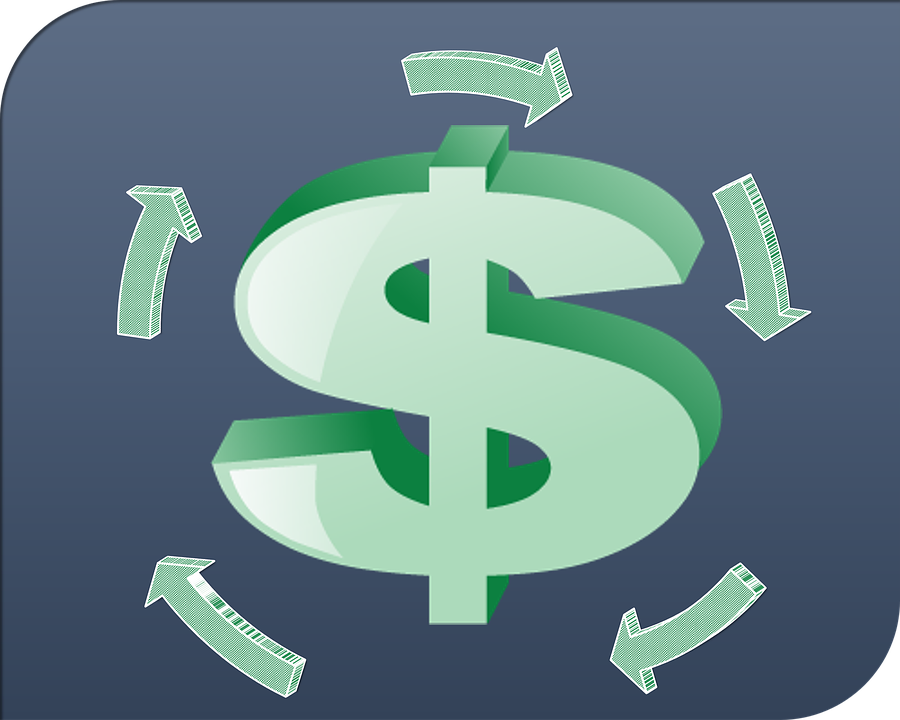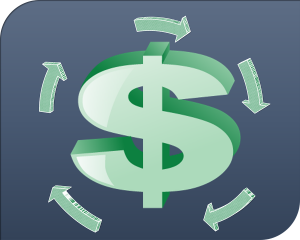
How to Reconcile Your Credit Cards in Quickbooks
 As most professional accountants know, reconciliation is an essential step in maintaining healthy financial records. Basically, this involves matching the transactions that you enter in your accounting software with the transactions displayed on your financial accounts. If you entered the transactions correctly, they should be the same. If you didn’t enter them correctly, however, they will be different. Assuming you use the Quickbooks accounting software, you can easily reconcile your credit card accounts in just a few simple steps.
As most professional accountants know, reconciliation is an essential step in maintaining healthy financial records. Basically, this involves matching the transactions that you enter in your accounting software with the transactions displayed on your financial accounts. If you entered the transactions correctly, they should be the same. If you didn’t enter them correctly, however, they will be different. Assuming you use the Quickbooks accounting software, you can easily reconcile your credit card accounts in just a few simple steps.
Before starting, it’s recommended that you create a backup of your Quickbooks company file. It’s always a good idea back up your account before making any major changes. Hopefully, you won’t need this backup. But if something goes awry, you can restore your Quickbooks account back to its original, working order using this backup copy.
To reconcile your card card accounts, log in to Quickbooks and click the gear icon at the top of the screen, followed by “Reconcile” under the column titled “Tools.” From here, click the drop-down menu and select the credit card account that you want to reconcile, followed by “Reconcile Now” to begin the process.
Next, you’ll need to review your account statement for that credit card. If you’re reconciling a credit card for the month of January, for example, look at the card’s January statement, which should reveal all debits and payments associated with the account.
In Quickbooks, click the drop-down menu and enter the end date for your credit card statement as well as an ending balance, followed by “OK.” Now comes the fun part: matching the expenses. Assuming you followed the steps previously mentioned, you should see a reconcile window in Quickbooks. Here, you can match each transaction in Quickbooks with the transactions listed in your credit card statement. When you see that two transactions match (which they should), click the box to the right side. This essentially verifies the transaction by telling Quickbooks that it’s also displayed in your Account statement.
Hopefully, you’ll see a difference value of $0 at the bottom of your reconciliation report, indicating that all transactions entered into Quickbooks were displayed in your credit card statement. If a particular transaction didn’t match, however, you should correct or remove it from Quickbooks. Remember, Quickbooks should accurately reflect all transactions displayed in your account statement. Otherwise, your books won’t be correct.
Did this tutorial work for you? Let us know in the comments section below!

How to Record a Bank Transfer in Quickbooks
 Trying to figure out how to record a bank transfer in Quickbooks? Unfortunately, some business owners make the mistake of recording the same bank transfer twice. Intuit explains that when both accounts — your account and the customer’s or vendor’s account — appear in your Chart of Accounts, you need to record this as a single transaction. You should not record it as a two transactions.
Trying to figure out how to record a bank transfer in Quickbooks? Unfortunately, some business owners make the mistake of recording the same bank transfer twice. Intuit explains that when both accounts — your account and the customer’s or vendor’s account — appear in your Chart of Accounts, you need to record this as a single transaction. You should not record it as a two transactions.
To record a bank transfer, log in to your Quickbooks account and click the (+) icon at the top of the screen, followed by ‘Transfer.” From here, click the “Transfer Funds From” menu and choose the bank account from which the funds are being withdrawn. Next, click the “Transfer Funds to” menu and choose the bank account to which the funds are being deposited. You aren’t finished just yet, however, as there are a few more steps you’ll need to make.
For the “Transfer Amount” field, enter the amount of the transfer. It’s recommended that you double check this information before proceeding to ensure it’s correct. Assuming it accurately reflects the correct amount of the transfer, edit the “date” to the appropriate date of the transfer and click “Save” to complete the process.
So, how do you record a bank transfer that was done using imported bank transactions? If both transactions were imported, you should transfer from one of these accounts and match it to the other account. This is done by choosing “Banking” at the top left menu, after which you can select one of the bank accounts. Next, click somewhere in the field of the transaction so that it selects it, followed by clicking the radio button labeled “Add to Transfer.” You can then select the other account in the account drop-down menu, followed by ‘Transfer.” After choosing the other account, select the “Recognized tab” and navigate to the transaction. Finally, click “Match” in the field for “action.”
Following these steps will allow you to easily record a bank transfer in Quickbooks. It’s important to note that you can record bank transfers for a variety of different account transfers in Quickbooks, including standard transfers, journal entries and imported transactions. Just remember to follow the steps outlined here. Failure to properly record a transfer will likely throw off your business’s books, which can cause a serious headache when tax time rolls around next year.
Did this tutorial work for you? Let us know in the comments section below!

How to Enable Account Numbers in Quickbooks
 When reviewing your Chart of Accounts in Quickbooks, you may discover that it doesn’t show the account numbers. In fact, Quickbooks Online doesn’t even use account numbers because it uses its own system of identification. Assuming you use Quickbooks Desktop, however, you can modify the settings so that your account numbers are displayed in your Chart of Accounts. For a step-by-step walk through on how to enable account numbers in Quickbooks, keep reading.
When reviewing your Chart of Accounts in Quickbooks, you may discover that it doesn’t show the account numbers. In fact, Quickbooks Online doesn’t even use account numbers because it uses its own system of identification. Assuming you use Quickbooks Desktop, however, you can modify the settings so that your account numbers are displayed in your Chart of Accounts. For a step-by-step walk through on how to enable account numbers in Quickbooks, keep reading.
To get started, log in to your Quickbooks account and click the gear icon at the top of the page, followed by Account and Settings > Advanced. From here, choose the pencil icon in the “Chart of Accounts” field. This will bring up an edit section in which you should click the boxes labeled “Enable account numbers” and “Show account numbers.” When finished, click “Save,” followed by “Done.”
Now that you know how to enable account numbers in Quickbooks, you might be wondering how to assign them. To assign account numbers, click the gear icon at the top of the main Quickbooks page and choose “Chart of Accounts.” From here, click the pencil icon to bring up the edit menu. You can then enter the account numbers in the box. Keep in mind Quickbooks only supports up to seven digits for account numbers. Therefore, your account numbers can be no longer than seven digits. Of course, many business owners and professionals prefer shorter account numbers simply because they are easier to manage. Regardless, though, you are not allowed to create account numbers longer than seven digits in Quickbooks.
You can also create account general ledger account numbers. Assuming you’ve enabled account numbers to show in Quickbooks (see above), simply right-click on an account number from your Chart of Accounts to edit and add a general ledger number.
Quickbooks has become the world’s most popular business accounting software, partly because of its simplicity and ease of use. As revealed here, the software makes it easy to change and modify your account. Whether you want to enable account numbers, customize invoice templates, etc., you can easily do so using Quickbooks.
So, how do you disable account numbers from showing in your Chart of Accounts? The process is pretty much the same. Go back into your Account and Settings > Advanced. Next, click the pencil icon and uncheck the box for “Show account numbers.” Finally, click “Save,” followed by “Done” to compete the process.
Have anything else you’d like to add? Let us know in the comments section below!

What Is Inventory Assets and COGS in Quickbooks?
 You’ll probably come across the terms “inventory asset” and “COGS” when using the Quickbooks accounting software for your business. Unfortunately, many business owners are unfamiliar with these terms, resulting in bookkeeping errors when they record and manage transactions. If you plan on using Quickbooks to handle your business’s financial transactions, you should understand inventory assets and COGS. Otherwise, you won’t be able to properly track inventory. So, what do these terms mean exactly?
You’ll probably come across the terms “inventory asset” and “COGS” when using the Quickbooks accounting software for your business. Unfortunately, many business owners are unfamiliar with these terms, resulting in bookkeeping errors when they record and manage transactions. If you plan on using Quickbooks to handle your business’s financial transactions, you should understand inventory assets and COGS. Otherwise, you won’t be able to properly track inventory. So, what do these terms mean exactly?
Inventory Account
The first element that we’re going to discuss is inventory account. Assuming you set up an inventory list in Quickbooks, you’ll see this in your account. The Quickbooks accounting software automatically creates an inventory account as well as a COGS when you set up an inventory list.
Inventory Asset
Not to be confused with an inventory account, there’s also an inventory asset. When you buy an inventory item, the respective account will debit the item inventory asset account while subsequently crediting your bank account. This isn’t debited to your expense account, simply because it’s an asset that you can sell at a later time. Basically, though, inventory assets are used for tracking inventory purchases. This makes it an essential element for retailers — local and online — as well as other businesses that sell a physical product to customers. Of course, not all businesses have inventory, nor do they need to worry about inventory assets. But if your business does sell a physical product, you should consider using inventory assets in Quickbooks to track your inventory purchases.
COGS
COGS stands for “Cost of Goods Sold,” which lives up to its namesake by reflecting the total cost of purchased goods. When your business sells an inventory item, you’ll see the COGS updated to reflect this transaction. You can run a Transaction Journal report to see the sales receipt, which also reveals the COGS. Intuit explains that COGS affects many elements of a business’s Quickbooks account. It affects the Balance Sheet, Profit and Loss statement and more.
Hopefully, this gives you a better understanding of inventory accounts, inventory assets and COGS. To recap, these three elements are used primary for inventory tracking in Quickbooks. If your business needs to track inventory, you should consider using them. They are available in all versions of Quickbooks Desktop.
Have anything else you’d like to add? Let us know in the comments section below!
How to Use Custom Email Invoice Templates in Quickbooks
 Do you email customers or clients invoices? There’s no denying the fact that emailing is a faster and more convenient way to send invoices than direct mail. Within seconds if clicking the “send” button, customers will receive their invoice. But it’s important that you customize your invoice templates so they reflect your business and its brand. Using the Quickbooks accounting software, you can easily customize your invoices in several ways, beginning with the use of a template.
Do you email customers or clients invoices? There’s no denying the fact that emailing is a faster and more convenient way to send invoices than direct mail. Within seconds if clicking the “send” button, customers will receive their invoice. But it’s important that you customize your invoice templates so they reflect your business and its brand. Using the Quickbooks accounting software, you can easily customize your invoices in several ways, beginning with the use of a template.
To change your invoice template for emails, log in to your Quickbooks account and select the “Lists” menu, followed by “Templates.” From here, you can double-click any of the pre-installed templates to further customize it. You can also access and manage your invoice templates by accessing Formatting > Manage Templates.
Once you’ve accessed an invoice template, click the “Select logo” button to upload your own logo. Keep in mind that Quickbooks only supports image logos in .jpg format. Therefore, you cannot not use an image logo in .gif, .png or other formats. This is done to protect against pixalization, which can make your logo appear blurry. So, make sure the image that you want to use is in .jpg format before uploading it to your Quickbooks account. After uploading your logo, click the “Use logo” button so that your invoices and other related documents will feature it.
You can also change the font and color of your invoice template. Under the section titled “Change Font for,” select the area in which you want to change the font. You can then select “Change Font” to change the font for that area. You can also change the color of your invoice template by clicking the drop-down menu for “Select Color Scheme.” Once you’ve chosen a color, click “Apply Color Scheme.”
Finally, click the “Additional Customization” button to further customize your invoice template. Here, you can add information to the header, columns or footer. It even allows you to give each heading of your invoice template a specific title. These are just a few ways to customize your email invoice template in Quickbooks.
Customizing your invoice templates is an important step to creating stronger brand recognition. If you use the same generic template as other businesses, customers are less likely to remember and recognize your brand. As revealed here, though, creating a custom invoice template in Quickbooks is a quick and easy process.
Did this tutorial work for you? Let us know in the comments section below!

5 Ways to Fund Your Small Business
 Nearly half of all small businesses in the United States start with under $5,000, according to research cited by Intuit. Whether you need more money or less, though, you should explore multiple funding solutions to determine which one is right for your small business. There are dozens of ways to fund a small business, some of which we’re going to discuss.
Nearly half of all small businesses in the United States start with under $5,000, according to research cited by Intuit. Whether you need more money or less, though, you should explore multiple funding solutions to determine which one is right for your small business. There are dozens of ways to fund a small business, some of which we’re going to discuss.
#1) Personal Cash and Credit
Perhaps the most common funding method for small businesses is personal cash and credit. Assuming you have a savings account or credit card, you can use them to fund your small business. Of course, the downside to using personal credit is the simple fact that you may not be able to repay it if your business fails.
#2) Crowdfunding
Crowdfunding has become an increasingly popular funding method for small businesses in recent years. It involves seeking many small investments from private businesses and individuals, typically over the internet. Crowdfunding investors may seek equity, repayment with interest or free products in exchange for the money they give you.
#3) Venture Capital
If your small business has high growth potential — meaning that it’s expected to make a lot of money in the future — consider venture capital as a funding option.
#4) SBA Loan
Another idea is a Small Business Administration (SBA) loan. Contrary to what some business owners believe, SBA loans aren’t issued by the SBA but, rather, third-party banks and lenders that comply with the SBA’s regulations. One of the perks of getting an SBA loan is the high approval rate. According to the SBA, roughly 85% of all loans for $150,000 or less are approved, and the average amount for an SBA loan is $375,000. If you’re unable to get a traditional business loan from your local bank, consider an SBA loan.
#5) Angel Investors
Finally, angel investors may offer funding for your business in exchange for equity. You give the angel investor a portion of your business’s equity, and he or she gives you funding to keep your business afloat. However, you’ll get more than just money from an angel investors. They also provide experience, expertise and wisdom, which is something that you can’t put a dollar value on. Angel investors work closely with the businesses in which they are invested. After all, the more successful the business becomes, the more money the angel investor makes on his or her equity.
Have anything else you’d like to add? Let us know in the comments section below!

How to Link a Deposit to an Invoice in Quickbooks
 When a customer pays for a product or service, you should record it under the “Receive Payment” option of your Quickbooks account. This ensures that the payment is linked to the invoice, thus automatically marking the invoice as “paid.” But what if you accidentally entered the payment as a deposit? Even if you entered a customer’s payment as a deposit in Quickbooks, you can still link it to the appropriate invoice in just a few simple steps.
When a customer pays for a product or service, you should record it under the “Receive Payment” option of your Quickbooks account. This ensures that the payment is linked to the invoice, thus automatically marking the invoice as “paid.” But what if you accidentally entered the payment as a deposit? Even if you entered a customer’s payment as a deposit in Quickbooks, you can still link it to the appropriate invoice in just a few simple steps.
Before we begin, it’s important to note that this only works if the payment hasn’t already been linked to an invoice. If you’ve already linked the customer’s payment to an invoice, you cannot link it to another invoice in Quickbooks. This is intended to prevent business owners and accountants from making duplicate entries, which could otherwise throw off their financial records.
To link a deposit to an invoice, log in to your Quickbooks account and find the deposit by accessing Accounting > Chart of Accounts. From here, select the bank account in which you deposited the customer’s payment, followed by clicking “View Register” or “Account History.” Next, find the deposit and click “Edit.” This will bring up a new window where you can edit the deposit’s details.
Once Quickbooks displays the information associated with your deposit, click the customer’s name in the “Received From” field. It’s important that you choose the right customer, as you don’t want to mark a different customer’s invoice as paid when it’s still outstanding. For the “Account” field, click “Accounts Receivable,” followed by “save and close.”
There are still a few more steps needed to link your deposit to an invoice. So, click the (+) icon at the top of the page and choose “Receive Payment.” Next, select the customer’s name again. Assuming you followed these steps correctly, you should see the invoice and deposit. You can then click the box next to the invoice and deposit boxes, after which both boxes should display a check mark. When finished, enter $0 for the “Amount Received” field. Also, enter the date on which the customer made the payment in the “Payment date” field. You can then click “Save and close” to complete the process.
After linking the deposit to the invoice, you’ll be able to view the payment in the Customer Center of your Quickbooks account.
Did this tutorial work for you? Let us know in the comments section below!

5 Common Tax Write-Offs for Self-Employed Workers
 If you’re a self-employed worker, you should take advantage of certain tax write-offs. Since you aren’t classified as an employee, you won’t have access to federal and state-required benefits like minimum wage, overtime pay, paid vacation, etc. However, you will have access to tax write-offs. And taking advantage of these write-offs can save you big bucks on your income taxes.
If you’re a self-employed worker, you should take advantage of certain tax write-offs. Since you aren’t classified as an employee, you won’t have access to federal and state-required benefits like minimum wage, overtime pay, paid vacation, etc. However, you will have access to tax write-offs. And taking advantage of these write-offs can save you big bucks on your income taxes.
#1) Home Office
Assuming you use a dedicated part of your home for business-related purposes at least 50% of the time, you are eligible for the home office tax deduction. The Internal Revenue Service (IRS) offers a simplified and regular format for home office deductions. The former uses a fixed formula of $5 per square feet (up to 300 square feet maximum), whereas the latter uses an itemized formula that includes factors like mortgage/rent, electricity and more.
#2) Phone
You can also deduct the cost of your phone from your federal income taxes, assuming you use it for business-related purposes. Of course, this is a smaller deduction compared to the home office, but it’s still extra money that you can save. Keep in mind, however, that the amount of which you are eligible to deduct varies depending on the cost of your bill and how much time you actually spend using your phone for business-related purposes.
#3) Vehicle
Do you use your vehicle for business? If so, you can deduct this expense from your federal income taxes. It’s not uncommon for ride-hailing drivers to deduct their vehicle from their taxes, for instance. Because they rely on their vehicle to perform this work, they are eligible for this deduction. But even if you use your vehicle for other business-related purposes — driving to job sites, meeting with clients, etc. — you can still deduct it from your taxes.
#4) Health Insurance
With the average cost of health insurance now exceeding $321 per month, many self-employed workers struggle to cover their premiums. The good news is that you can deduct the cost of your health insurance premiums from your federal income taxes.
#5) Internet
If you use your internet for business-related purposes, you can deduct it from your federal income taxes. According to Chron, eligible deduction amounts vary depending on the percentage of time that you spend using the internet for business-related purposes. If you use it half for business and half for personal purposes, you can deduct half the cost from your taxes. Of course, you should consult with tax professional to learn more about these and other deductions for self-employed workers.
